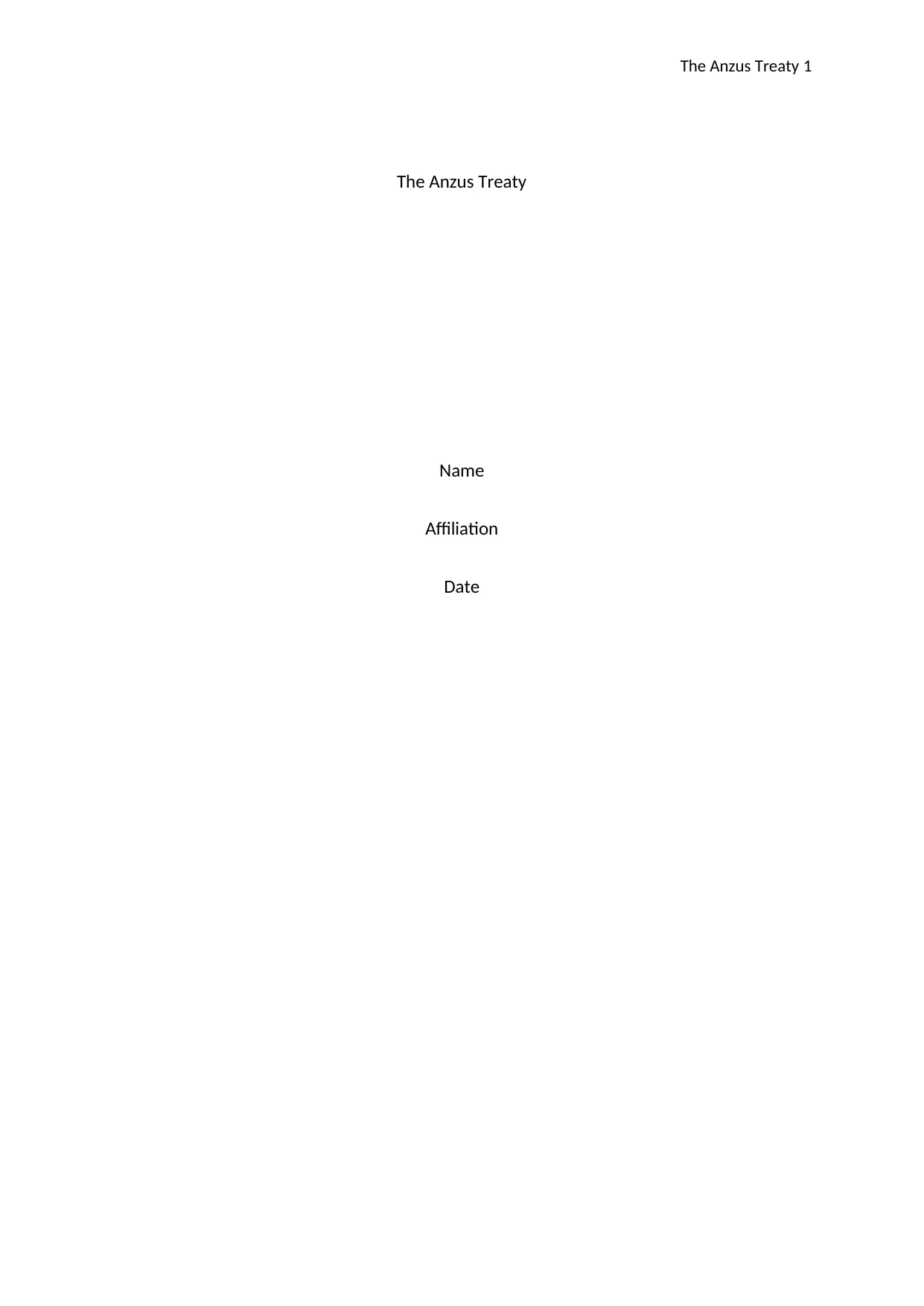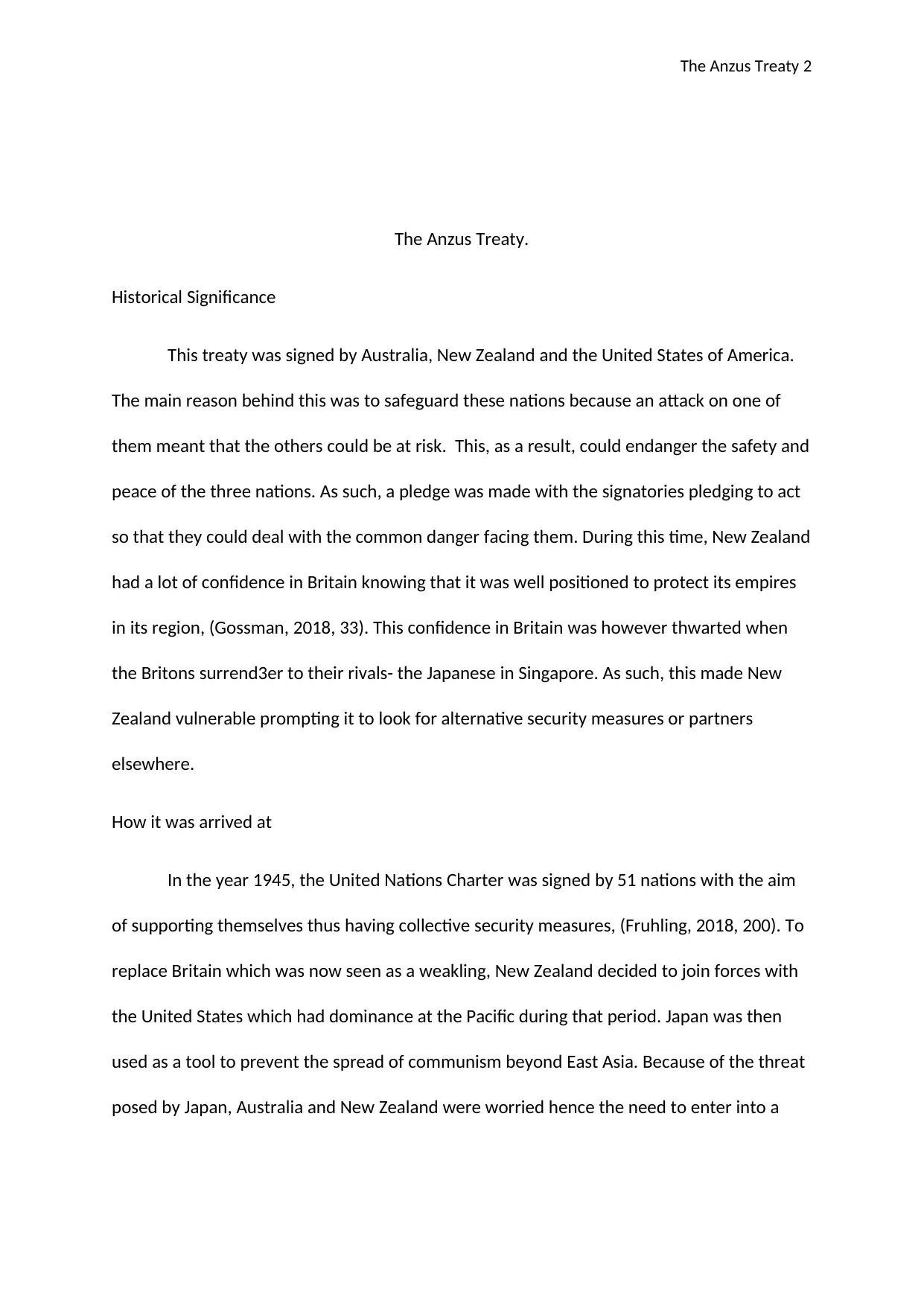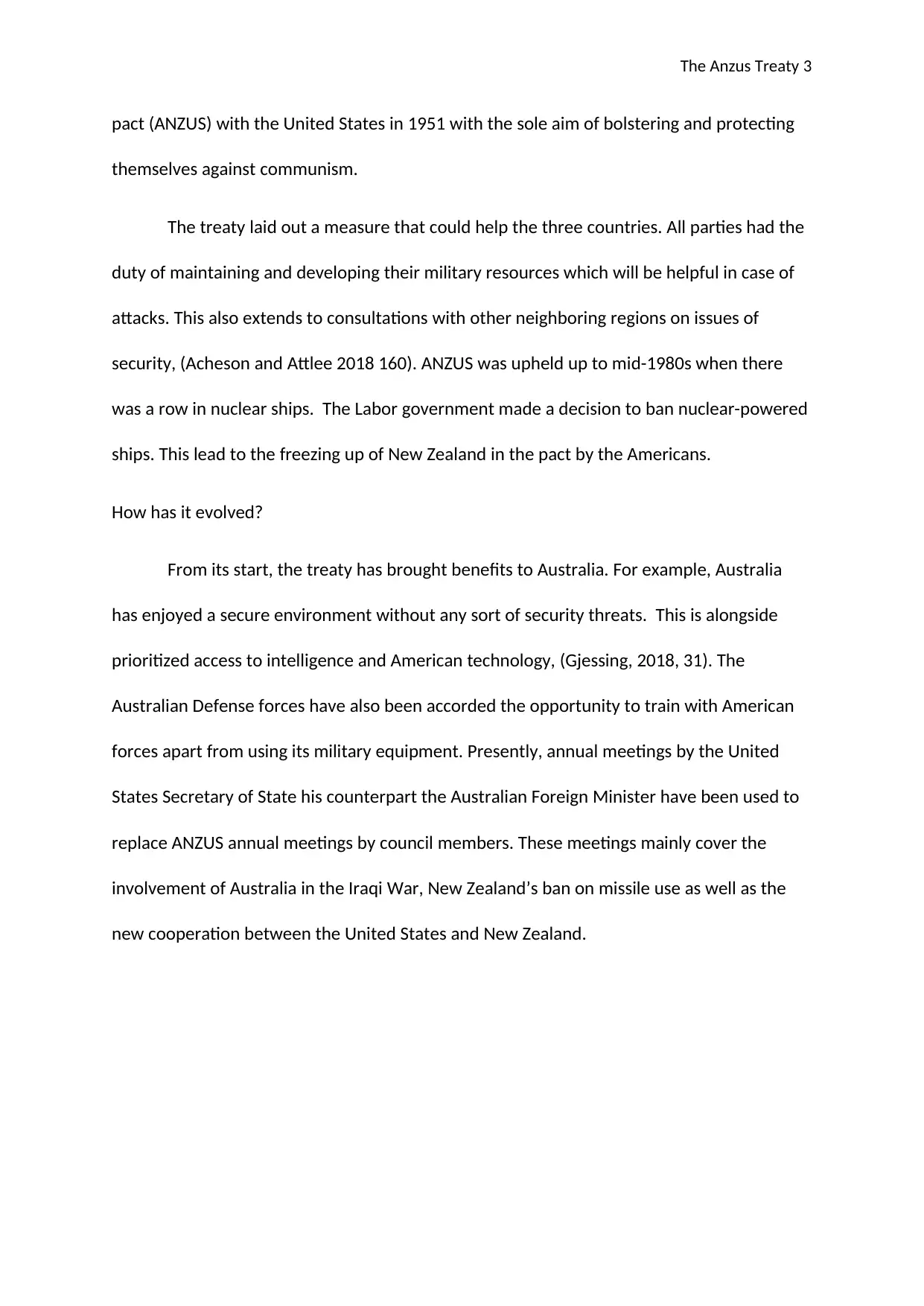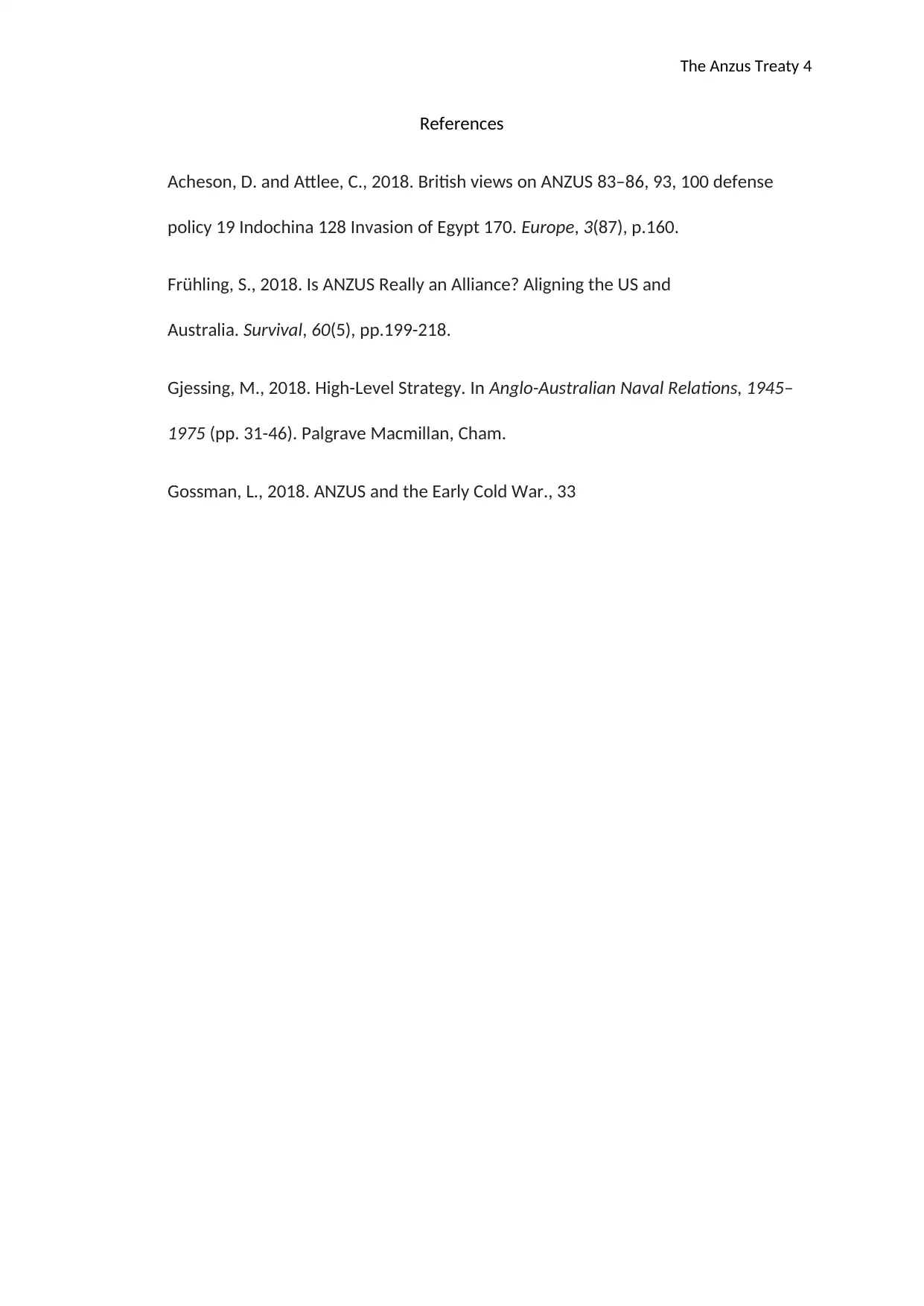The ANZUS Treaty: A Comprehensive Look at its Origins and Development
VerifiedAdded on 2023/06/04
|4
|659
|321
Essay
AI Summary
This essay delves into the historical significance of the ANZUS Treaty, a pact signed by Australia, New Zealand, and the United States to safeguard against common dangers. It highlights New Zealand's shift from reliance on Britain to forming an alliance with the United States amidst Cold War tensions and the perceived threat of communism. The essay further examines how the treaty has evolved, particularly focusing on Australia's benefits, such as enhanced security and access to American technology. It also touches upon the challenges and changes, including New Zealand's nuclear ship ban and the shift towards annual meetings between the United States and Australia, replacing formal ANZUS council meetings. The essay concludes by referencing key sources that provide further insights into the treaty's historical and contemporary relevance.
1 out of 4







![[object Object]](/_next/static/media/star-bottom.7253800d.svg)